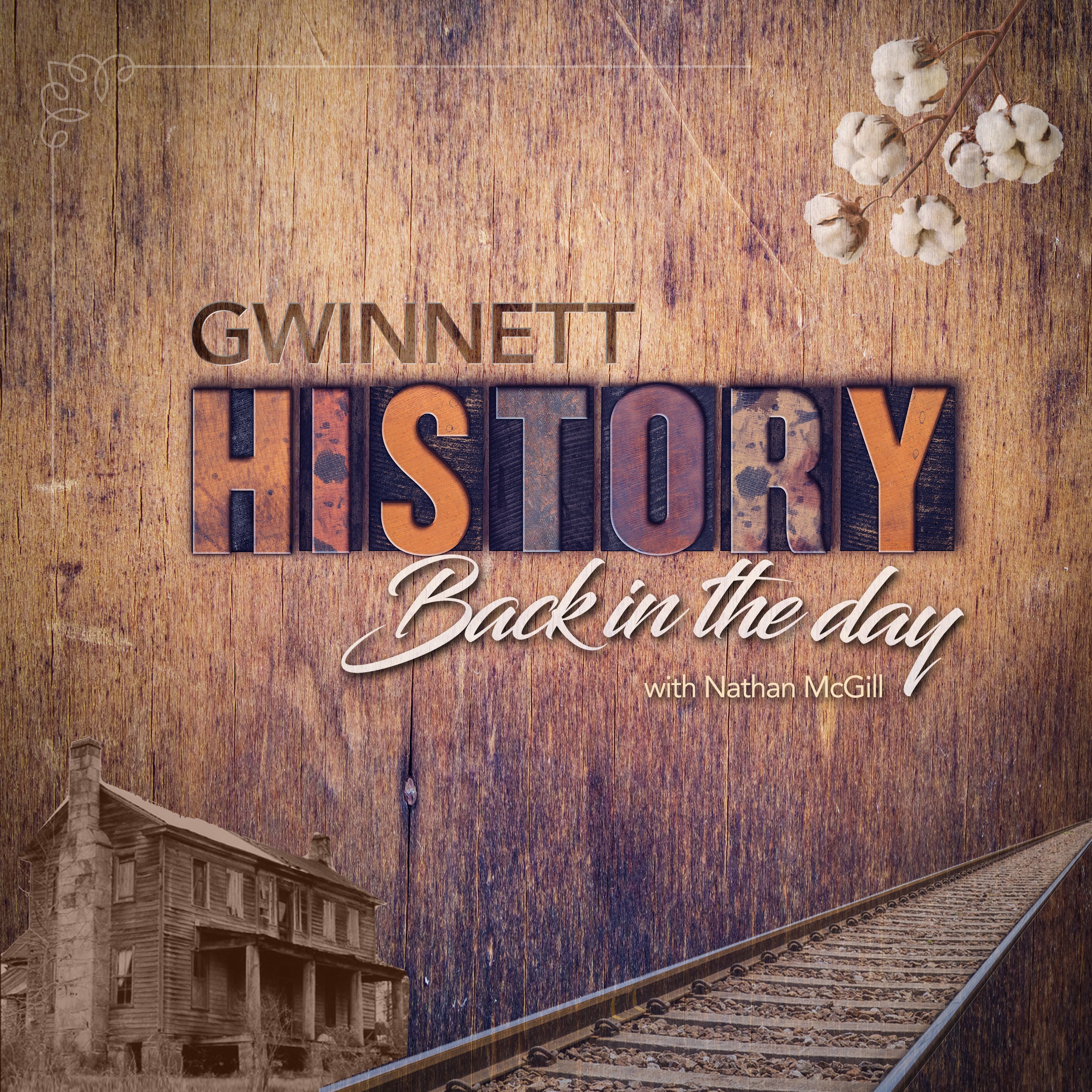2020. The year is a bit hard to fathom. Gwinnett has come a long way on its journey since 1818 and now with more than 2 centuries under its belt some stories can be written which are wholly encompassed within the county’s confines.
If you cross the railroad tracks in Lawrenceville and head northeast up Clayton Street, watch out for construction cones and warning signs. Its an area under development. A walking trail will extend from downtown Lawrenceville to Georgia Gwinnett College. The trail needs to cross Clayton street and then parallel Northdale road. The path will allow for a safe route for the growing minds at the college to enter the historic heart of the city and experience the rich culture that is developing there, but its really nothing new. Or as King Solomon out it in Ecclesiastes “There is nothing new under the Sun.”
Businesses thriving, America as the world’s leader, educational opportunities to new populations, and many other such endeavors. We’re not talking about 2020 here, we speaking about 1920. In 1920, Lawrenceville was a hub of opportunity. New businesses were opening and many were growing. The town had only been a road crossing a few years before and now hosted 3 railroads, numerous churches, and centers of manufacturing. The courthouse had been rebuilt since its fire in the 1870s and the city was on a path forward. It needed connection to the outside world to make this happen and our little path along Northdale road provides the thoroughfare.

Although Gwinnett had been considered as a route for railroads as early as 1850 it wasn’t until the 1880s that the connection came. The Southern railway was the first to reach into town. Realizing that access to a county seat was valuable, the Southern built a branch line from Suwanee to Downtown Lawrenceville. The station for the Mightly LBRR was near was Slowpour brewing is today. In an effort to save cost it was built as a 3 foot narrow gauge line allowing for tighter curves and steeper grades than can be used on the standard 4 foot 8 and ½ inch mainline rails. The line met with initial success.
People could now catch a train from Lawrenceville to Atlanta for business. Farmers could ship their goods by rail and reduce the cost of paying for long wagon transport. And the United States mail could carry a much more regular service to and from the city. The railroad provided employment for over a dozen people in town and the traffic on the line even necessitated another station named Huff be erected at the halfway point between Lawrenceville and Suwanee. If you’re curious Huff would be near present day McKendree Church, named for the Huff family that owned a great deal of land there. Business got so good on the line that the southern decided to change the rail width to standard gauge to allow for easier interchange with the Mainline at Suwanee. The meant buying more property near the Yellow River and erecting a better, stronger trestle.

Success always breeds competition and soon it came. The Georgia, Carolina, and Northern railroad built a line through town. This forerunner of the Modern day CSX had one advantage over the LBRR, Lawrenceville was on its mainline. This meant that connections to the Atlanta and other places were faster on this route and soon business shifted. That Company soon became known as the Seaboard Airline Railway and they built a branch line to Loganville to capture all the farm and passenger traffic from that portion of the county. If you’ve ever had a coffee from the Biscuit Barn in Lawrenceville then you’ve sat adjacent to the Lawrenceville and Loganville railroad tracks. The seaboard soon used its mainline muscle to force shippers to use them rather than hand shipments to the LBRR in Lawrenceville.
The Lawrenceville Branch Railroad had to sue the Seaboard in court to force them to accept traffic on interchange in Lawrenceville. To view a real life relic of the lawsuit, visit 550 trackside one day. If you stand on their front porch and look across Clayton street you’ll see some rails in the dirt. These are the rails the Georgia railroad commission forced the Seaboard to install for interchange with the Lawrenceville Branch Railroad when the lawsuit was finalized. Despite these efforts, the traffic wasn’t enough to keep the LBRR going. It would soon disappear from the Map. A decade later so would the Lawrenceville and Loganville Railroad.
In 1920, steam whistles sounded through the countryside as the LBRR crossed its trestle over the Yellow River Approaching downtown Lawrenceville. Fast forward a century and now the sound of car horns break the silence.
As a student leaves downtown Lawrenceville and takes the new path back to Georgia Gwinnett College, its not really a new path. They are walking on the rails of time. Their footsteps fall where steam trains once plied their trade. They are carrying their knowledge where once steel rails carried steel wheels. The new pedestrian path follows the same route that the Lawrenceville Branch Railroad once took to bring a new ear of commerce to Downtown Lawrenceville.
ABOUT THE PODCAST:
GWINNETT HISTORY: BACK IN THE DAY is hosted by Nathan McGill, an award-winning filmmaker, writer and storyteller at The Guide to Gwinnett and Gwinnett Magazine. Subscribe and follow along as Nathan leads us through compelling stories about Gwinnett. This article was written by Elijah Stancel, who provides writing and research assistance to Gwinnett History: Back In The Day.
A Storyroad Studios Production.





